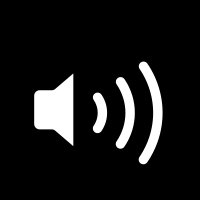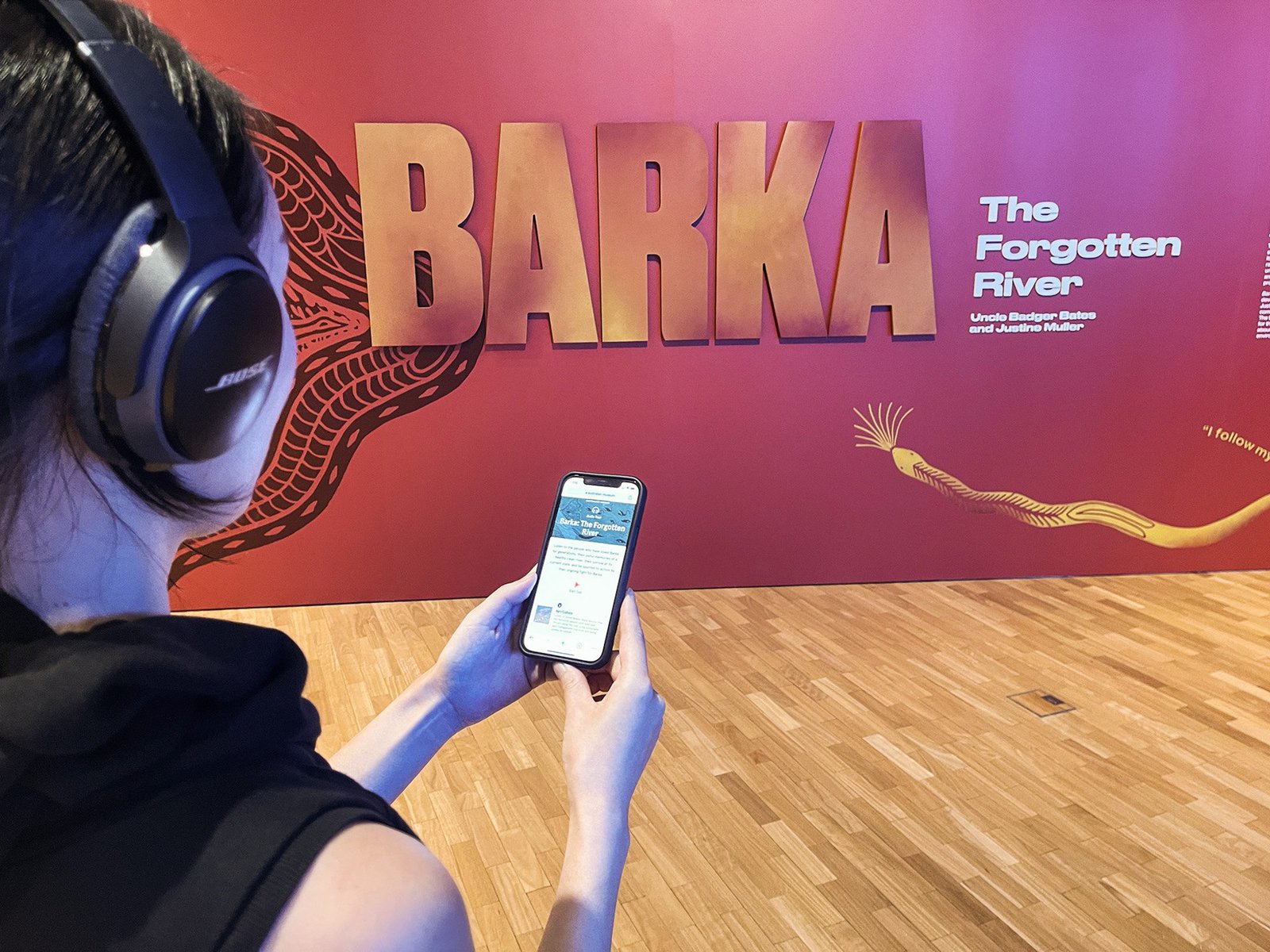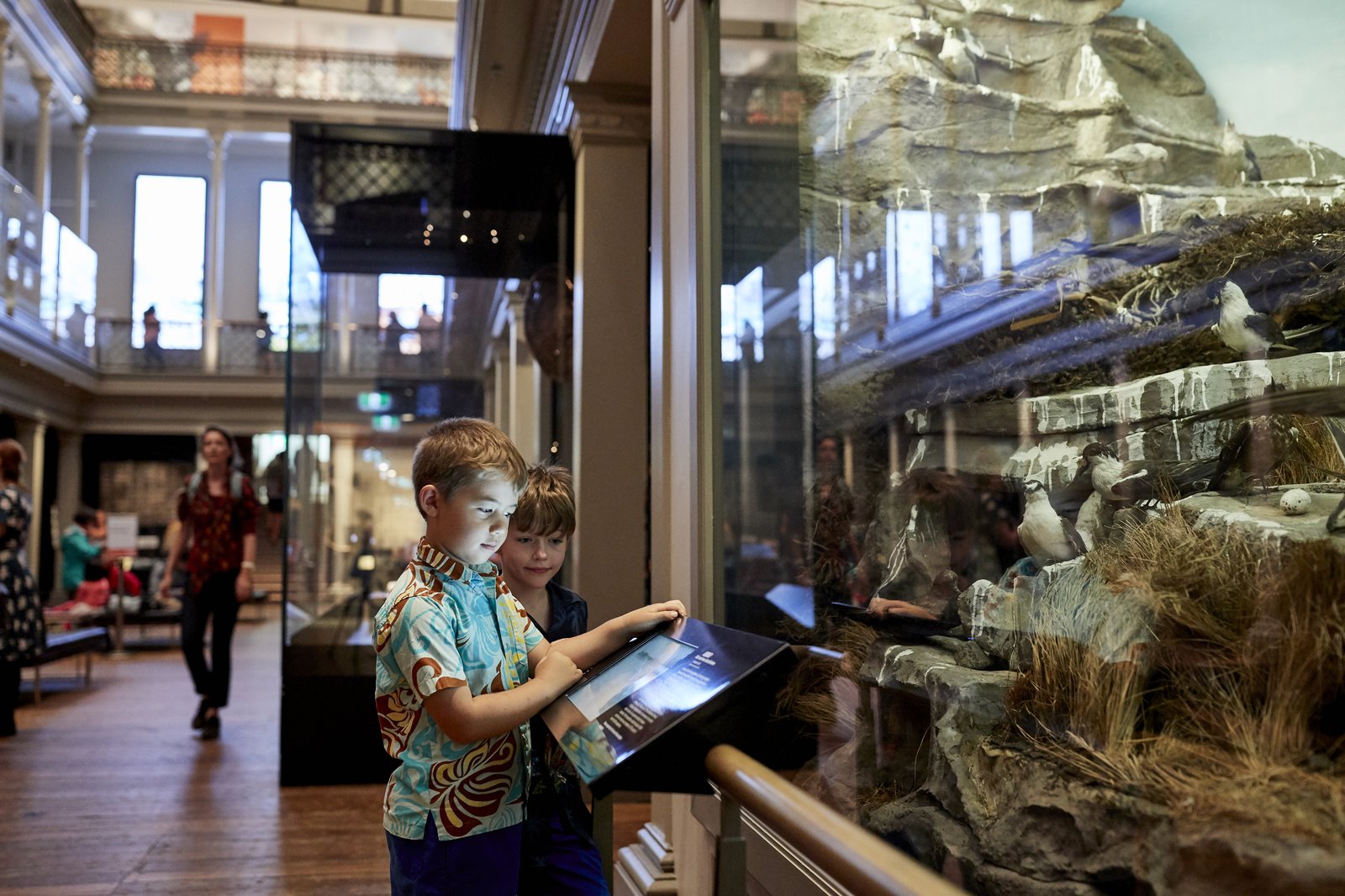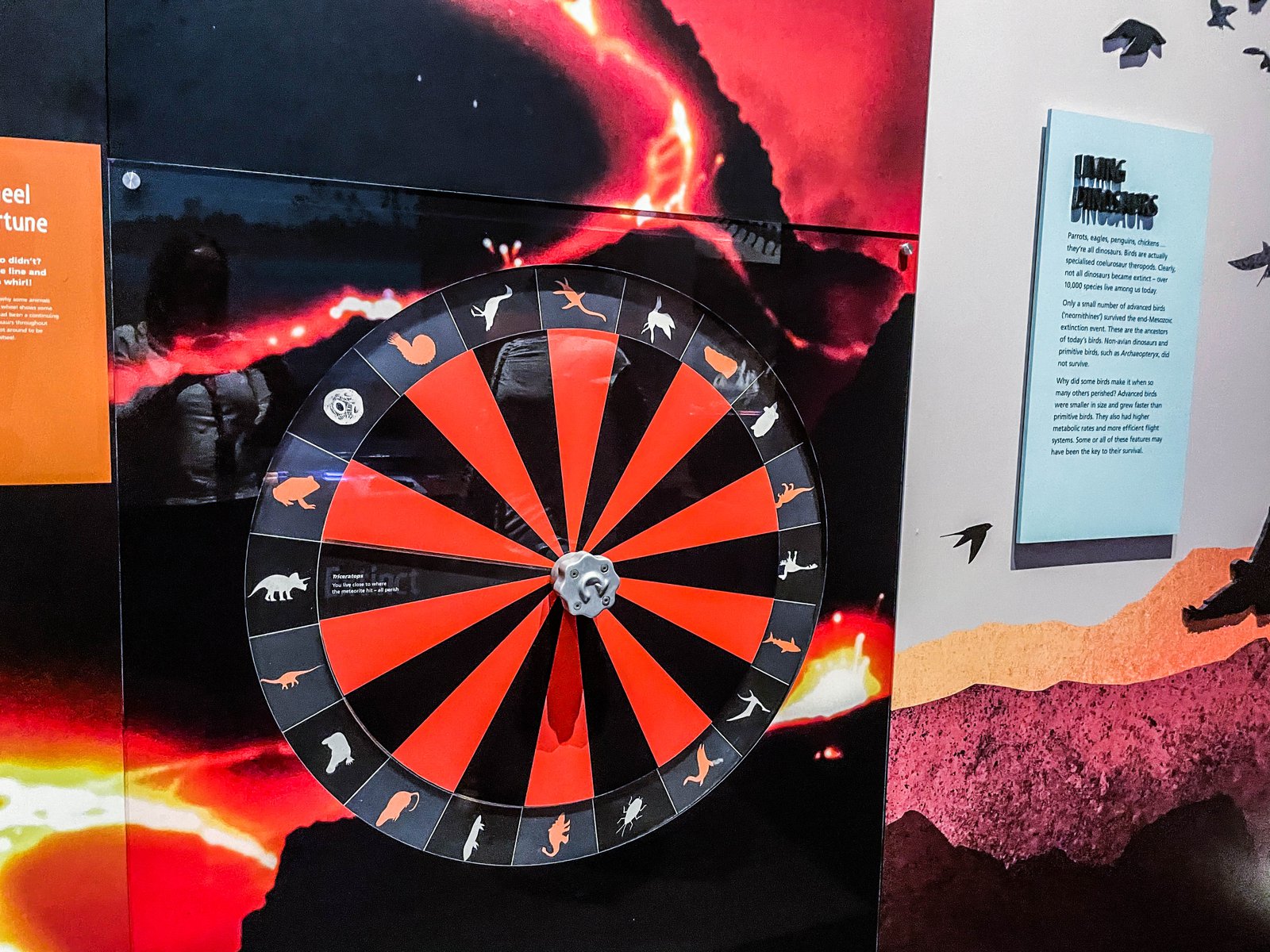Visual story: how to prepare for your visit and what to expect
Follow this visual and written guide to help plan your visit to the AM.
On this page...
Download the Visual Story
My visit to the Australian Museum
A 'Visual Story' is a step-by-step guide designed to help those with autism or sensory sensitivities to plan their visit to the Australian Museum. This Visual Story will illustrate how to access the AM building, what to expect upon arrival and what you might experience throughout the different spaces.

© Australian Museum
I will be visiting the Australian Museum

© Australian Museum
I will use this Visual Story to prepare for my visit. The Australian Museum (AM) inspires understanding and conservation of our natural and cultural worlds. The AM is open every day of the year, except Christmas Day, from 10am to 5pm.
Early Birds: Autism & sensory-friendly mornings

© Australian Museum
Early Birds: Autism and sensory-friendly mornings from 8-10am. Register here.
We welcome visitors to experience the AM in a reduced sensory, relaxed, and supportive atmosphere. Early Birds are welcome to stay and enjoy the AM for the remainder of the day, however, lighting and sound in exhibition spaces will return to previous levels along with other features.
What to bring?

© Australian Museum
The AM has low, medium and high sensory areas. These are indicated on the AM Map.
If I have sensory sensitivities, I can bring these items to help me feel comfortable and relaxed:
- Noise reducing headphones
- Stimming or fidget toy or device
- Hat or sunglasses
- Hand sanitiser.
I will see the below symbols in this Visual Story. They will help me prepare for spaces that might have bright lights, smells, loud sounds or be very visual.




Where can I go if I need somewhere quiet?

© Australian Museum

© Australian Museum

During Early Birds (8-10am), I am welcome to use the Members Lounge as a Quiet Room if I need to take a break.
This is located on Level LG and I can take the lift or stairs to get there.
There will be Sensory Oasis tents provided by St Vincent de Paul Society in this space space and weighted lap pads, textured cushions, and other calming resources.
After 10am, Early Birds attendees who aren’t Members, won’t be able to access this room.
Where can I find the Australian Museum?

Museum Walk ramp to the entrance.
Image: James Horan© Australian Museum

The AM’s main entrance is located on the corner of College Street and William Street in central Sydney, across the road from Hyde Park and opposite St Mary’s Cathedral.
The entrance is on a main road and can be noisy with traffic.
To plan how I will get to the AM, I can visit the Parking and Public Transport and the Location and Access webpages.
I will know when I am there because I will see the sandstone building with the AM logo.

© Australian Museum

First, I will walk up Museum Walk ramp to the entrance. Every adult will need to use their smartphone camera to scan the QR code and check in. A security guard will check that I have checked in correctly. If I need help checking in, I can ask a security guard.
If there is a queue, I will wait patiently for my turn. I can play with a stim or fidget toy/device from home, whilst I wait.
The green circles on the ground show me where I can stand while I’m waiting. Everyone who is coming with me to the museum can stand near the same circle.
Entering the Australian Museum

AM staff wear a black uniform and have a name badge and can answer my questions or help me if I get lost.
Image: James Horan© Australian Museum

If I have pre-purchased a ticket to a program, event, or exhibition, I will show staff my ticket (printed or on device) as I enter.
I can purchase ticket/s to special exhibitions at the Admissions desk.
Staff wear a black uniform and have a name badge. I can collect a map of the AM to help me navigate and explore.
Staff can answer my questions or help me if I get lost.
Australian Museum Visitors Map

© Australian Museum
Discover the indoor map of the Australian Museum illustrating the locations of exhibitions and galleries, cafes and visitor facilities. I can explore the online map here. I can check the AM website before I visit to see what exhibits I will be able to explore.
Acknowledgment of Country

© Australian Museum

I will see the Acknowledgment of Country inside the main entrance. The land on which the Australian Museum stands is Gadigal land.
The painting of the Sydney Shield in Crystal Hall pays respect to the Custodians of this land.
I am welcome to look at and touch this wall.
What is the right thing to do when I am at the AM?
Let's look at some positive behaviours.
I will walk through the AM so I don’t slip or bump into anything or anyone.
I will make sure my hands are clean before and after I touch something. There are hand sanitising stations and toilets where I can wash my hands throughout the AM.
I will cover my nose and mouth with a tissue or flexed elbow when coughing or sneezing.
When I am hungry, I will sit at a table at one of the cafés to eat. Once I am finished eating, I will put any rubbish in the bin.
There are some display objects that I can touch. Some things may feel rough, smooth, bumpy, soft or hard.
I will wear a mask if social distancing is difficult.
I will not take any food or drink into the galleries. This will help preserve the collections.
If there is a ‘Please do not touch’ sign, or when objects are behind glass, this means I won’t be able to touch because they need to be kept safe.
Sometimes the AM is very busy. I might need to wait for my turn. I can play with something I have brought from home while I wait.
Toilets

© Australian Museum

© Australian Museum

- I can look for signs, the map, or ask a staff member if I need help finding a toilet.
- The closest toilet to the entrance of the AM is on the ramp, behind the shop on Level G.
This is an accessible toilet. - I can choose to use paper towel or a hand dryer in the accessible toilets. The hand dryer is very loud. I can wear my noise cancelling headphones in the bathroom if I find the hand dryers too loud.
- There are toilets on every level of the Australian Museum, including a Changing Places accessible adult change facility on Level 2. I will need to ask staff to access this room.
Places to eat

© Australian Museum

Billabong Waterhole 10am-4pm weekdays or 11am-4pm weekends (Level 2)
Family friendly kiosk where I can buy pre-made food like sandwiches, salads and drinks. It can’t cater for dietary requirements but I can bring my own food and eat it here.
This area is very bright so I may want to wear a hat or sunglasses here. If it gets loud, I can wear my noise cancelling headphones or earmuffs.
Hintze Hall on Level UG has tables for picnicker seating, so I can bring my own food if I would like.

© Australian Museum
No.1 William [Summer] 11.30am-2.30pm (Level 4)
The restaurant menu can be accessed here. The menu features hot and cold food, such as hot chips, with table service. No BYO.
There are noises, smells and large windows with a view, it can be bright. I can look out and see the water.
If it is too bright I can wear sunglassess or a hat.
Lifts

© Australian Museum
There are three lifts I can use to move around the AM. I can use the lifts if I am unable or prefer not to use the stairs.
I will need to press the arrow button to use the lift. Once inside, I will press the number button for the level I want to visit.
Lift A has access to all levels
Lift B has access to UG and Level 1, 2, & 4
Lift C has access to B and UG
Museum Shop

© Australian Museum

The AM Shop is near the entrance and exit to the AM on the Ground (G) Floor.
I can visit the AM Shop when I start or finish my visit.
The shop has all sorts of things for sale, such as mineral specimens, books, Australian animal and dinosaur toys. The putty and sensory toys are popular.
Some of the soaps and toiletries for sale have a strong smell.
Suggested route to see all the Exhibitions and Galleries
Barka: The Forgotten River
Level UG
First Nations Gallery: Bayala Nura (Yarning Country)
Level UG
First Nations Gallery: Garrigarrang (Sea Country)
Level UG
Wild Planet
Level UG
Westpac Long Gallery: 200 Treasures of the Australian Museum
Level G and Level 1
Minerals
Level 1
Burra
Level 2
Surviving Australia
Level 2
Dinosaurs
Level 2
Birds of Australia
Level 2
Beginning my AM journey

© Australian Museum

© Australian Museum

I want to go to the galleries and exhibitions.
I can use the ramp around the back of the shop or the stairs.
Hintze Hall

© Australian Museum

Once I have walked up the ramp or stairs, I will enter Hintze Hall on Level UG, this is the centre of the AM.
I can access many exhibitions from here.
If I need a snack or a drink, there is a small kiosk which is open all day. There are coffee smells and sounds from the kiosk. Nearby seating is picnicker seating so BYO is welcome.
I will need to sit at one of the tables to eat and drink. There are bins nearby where I can put my rubbish.
Barka: The Forgotten River

© Australian Museum

© Australian Museum
I will find the exhibition Barka: The Forgotten River in Hintze Hall.
I will find the entrance to this exhibition in Hintze Hall, Level UG, which is after the stairs from Crystal Hall to my left.
This is a new temporary First Nations exhibition developed by Uncle Badger Bates and Justine Muller with the Barkandji community.
There will be visual projections and TV screens throughout, some with buttons I can press to start the audio.
There will be hand receivers I can pick up to listen to First Nations speakers.
There is also a section that has light movement to represent the river. If I need to I can use my glasses, hat or ear muffs to reduce the sensory experience.
First Nations Gallery: Bayala Nura

© Australian Museum
I will find the entrance to Bayala Nura (Yarning Country) in Hintze Hall, Level UG.
In this gallery I can explore Australia’s Aboriginal communities. There are lots of interesting objects and videos on screens I can watch.
The volume will be set to low or off during Early Birds.
First Nations Gallery: Garrigarrang

© Australian Museum
I will walk into Garrigarrang (Sea Country) from Bayala Nura. I will see Ghost Net sculptures hanging from the ceiling.
These sculptures were made using fishing nets which litter the waters of Northern Australia and Torres Strait.
This exhibition is dimly lit and has some LED strip lights underneath the displays.
Some displays in this exhibition talk about death. If I find this overwhelming, I can leave this space and explore somewhere else.
Wild Planet

© Australian Museum

I will find Wild Planet, Level UG, from Garrigarrang, Hintze Hall, or walk through from Westpac Long Gallery.
In this gallery I will see lots of animals and animal skeletons in glass cases.
This exhibition can get loud when there are many people. I may want to wear my noise reducing earmuffs or headphones.
There are bright lights and a lot of reflective glass in this exhibition. I may want to wear sunglasses or a hat in this space.

© Australian Museum

I will marvel at a Sperm Whale skeleton, and see the largest bird and moth on Earth.
There is a dark, quiet cave area displaying nocturnal animals at the end of the exhibition. I will look for the lion above it.
I can touch and feel different animal coverings on display in this exhibition.
I will remember to clean my hands before and after touching displays at the AM.
Westpac Long Gallery: 200 Treasures of the Australian Museum

© Australian Museum

Westpac Long Gallery showcases 100 treasures of the AM alongside the stories of 100 of Australia’s most-influential people.
I will walk down stairs to enter the exhibition from Wild Planet, Level UG.
This gallery is a sensory friendly space. It is quieter, calmer and darker in this gallery. There are comfy seats I can sit or lie down on if I need to.

© Australian Museum
I will see collections of objects. Some are very old, some are very rare, some are beautiful, others mysterious.
All tell fascinating and unexpected stories – about the Museum, about Australia and its region, or about the wonders of the natural world.

© Australian Museum

I can walk up the stairs or take the lift to Level 1 and continue exploring the 200 Treasures exhibition.
I can discover the stories of 100 extraordinary people who have shaped Australia and made it the country it is today. Scientists, explorers, and pioneers; entrepreneurs, athletes, and artists; politicians, an outlaw and a saint.
I can touch the screen to learn more about the people I see on the screen. There is a sign on the right hand side of the screen which explains how I can use them.
Minerals

© Australian Museum
Minerals has one of the largest rock and mineral collections in Australia, featuring more than 80,000 specimens from across Australia and the world. I will walk up the stairs (or take the lift) to Level 1.
This exhibition is a sensory friendly space. It is quieter, calmer and darker. I can learn how minerals are made and see minerals that glow in the dark.

Burra


Burra is the AM’s learning and play space which explores the migration journey of burra the eel through estuaries and rivers, rockpools and out to sea.

© Australian Museum
This space has many interactive features I can touch, listen and see while exploring the giant burra (eel), sensory walls and interactive play zones. This area may be filled with children and can become noisy when busy. I may like to wear headphones if I become overwhelmed.
Surviving Australia

© Australian Museum

I will discover the secrets of Australia’s weird and wonderful wildlife including giant megafauna from the ancient past.
Content warning: There are displays of snakes and spiders in this exhibition. I can leave this exhibition if I feel scared.

© Australian Museum

This exhibit will teach me about megafauna. Megafauna are really big animals that used to live in Australia a long time ago.
I can touch these models if I would like to.

© Australian Museum
In the Changing Climate zone I can learn how Australia has been impacted by the climate crisis and what I can do to help.
There is a large screen in this space that I can interact with. When I finish with the screen I can wipe it down using a screen wipe which is next to the screen. This will help make sure there are no germs.
Dinosaurs

© Australian Museum

The Dinosaur exhibition is on Level 2. I will walk amongst real dinosaur skeletons and life-size models, as well as the fossil teeth, skulls and claws of these ancient creatures.
There are many fossil displays I can touch in this exhibition.
During general opening hours, this exhibition has unexpected loud sounds such as dinosaur roars and thunder. There is a flashing strobe light when the thunder sounds. These unexpected sounds and lighting features will be turned off for Early Birds.
This gallery also has models which show death and a model of a dinosaur autopsy. I may find this scary.
I can choose not see this exhibit.

© Australian Museum

I can spin the ‘wheel of misfortune’ to discover which animals went extinct during the Age of Dinosaurs.
Birds of Australia

© Australian Museum
I can discover Birds of Australia on Level 2.
Question - did you know Australia has one of the most diverse and abundant bird populations in the world?

© Australian Museum
In this exhibition I will come face to face with familiar and unfamiliar birds alike, from the iconic cockatoos and budgies to the stunning Regent Bowerbird and adorable Little Penguin.
I will discover ways Australia’s birds have adapted to various environments.
Exiting the Museum

© Australian Museum

© Australian Museum

If I followed the suggested sequence in this Visual Story, I will have now visited every exhibition in the AM.
To exit the Museum, I will need to walk down the stairs or catch the lift to the Ground (G) Floor.
The exit is next to where I entered the Museum.


